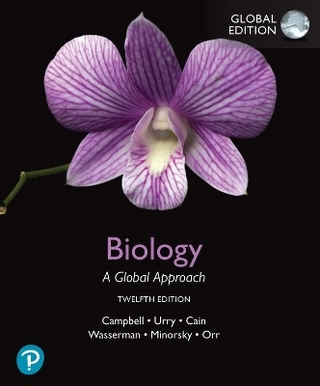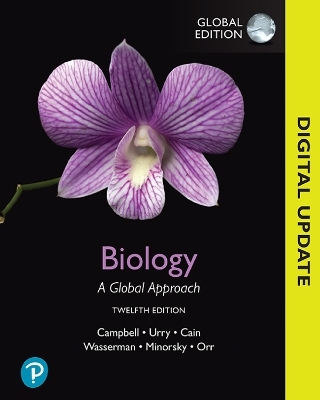
Human Blood Plasma Proteins – Structure and Function
Wiley-Blackwell (Hersteller)
978-0-470-72437-8 (ISBN)
- Keine Verlagsinformationen verfügbar
- Artikel merken
Human Blood Plasma Proteins gives an overview of the proteins found in human blood plasma, with special emphasis on their structure and function and relationship to pathological states and disease. Topics covered include: * introduction to blood components and blood plasma proteins* blood plasma protein domains, motifs and repeats* blood plasma protein families and posttranslational modifications* blood coagulation and fibrinolysis* the complement system* the immune system* enzymes* inhibitors* lipoproteins* hormones* cytokines and growth factors* transport and storage The information of each protein discussed in this book in some detail is summarised at the end of each chapter in a Data Sheet, where one can find the most important data of each protein at one glance. Full cross-referencing to protein databases is given and many of the proteins discussed are accompanied by their 3D structure. Attractively presented in full colour, Human Blood Plasma Proteins is an essential atlas of this proteome for anyone working in biochemistry, protein chemistry and proteomics, structural biology, and medicine.
Johann Schaller and Simon Gerber are the authors of Human Blood Plasma Proteins: Structure and Function, published by Wiley.
Preface. 1 Introduction. References. Part I. 2 Blood Components. 2.1 Introduction. 2.2 Short History. 2.3 Blood Components. References. Data Sheet. 3 Blood Plasma Proteins. 3.1 Introduction. 3.2 Short History. 3.3 Classification of Blood Plasma Proteins. References. Part II. 4 Domains, Motifs and Repeats. 4.1 Introduction. 4.2 The Epidermal Growth Factor (EGF)-Like Domain. 4.3 The Kringle Domain. 4.4 The g-Carboxyglutamic Acid-Rich (Gla) Domain. 4.5 The PAN/Apple Domain. 4.6 The Sushi/CCP/SCR Domain. 4.7 The Fibronectin Type I, the Fibronectin Type II Collagen-Binding and the Fibronectin Type III Domains. 4.8 The Coagulation Factors 5/8 Type C Domain (FA58C). 4.9 The Thrombospondin Type I Repeat (TSP1). 4.10 The VWFA, VWFC and VWFD Domains. 4.11 The Cystatin-Like Domain. 4.12 The LDL-Receptor Class A (LDLRA) and Class B (LDLRB) Domains. 4.13 The C-Terminal Cystine Knot (CTCK) Structure. 4.14 The Anaphylatoxin Domain. 4.15 The CUB Domain. 4.16 The NTR Domain. 4.17 The C-Type Lectin (CTL) Domain. 4.18 The Ig-Like Domain. References. 5 Protein Families. 5.1 Introduction. 5.2 Serine Proteases: The Trypsin Family. 5.3 Serine Protease Inhibitors (Serpins). 5.4 The a2-Macroglobulin Family. 5.5 The Serum Albumin Family. 5.6 The Pancreatic Trypsin Inhibitor (Kunitz) Family Signature. 5.7 The Kazal Serine Protease Inhibitors Family Signature. 5.8 The Multicopper Oxidase Family. 5.9 The Lipocalin Family. 5.10 The Globin Family. 5.11 The Glucagon/Gastric Inhibitory Polypeptide (GIP)/Secretin/Vasoactive Intestinal Peptide (VIP) Family. 5.12 The Glycoprotein Hormone Family. 5.13 Membrane Attack Complex Components/Perforin Signature (The Complement C6/C7/C8/C9 Family). 5.14 The Lipase Family. 5.15 Hormone Families and Signatures. 5.16 Growth Factor Families. 5.17 Cytokine Families. 5.18 Interleukin Families and Signatures. 5.19 The Small Cytokine (Intercrine/Chemokine) Family and Signature. References. 6 Posttranslational Modifications. 6.1 Introduction. 6.2 Databases for Posttranslational Modifications (PTMs). 6.3 Disulfide Bridges. 6.4 Glycosylation. 6.5 Phosphorylation. 6.6 Hydroxylation. 6.7 Sulfation. 6.8 Acylation and Alkylation. 6.9 Amidation. 6.10 Carboxylation. 6.11 Crosslinks. References. Part III. 7 Blood Coagulation and Fibrinolysis. 7.1 Introduction. 7.1.1 Definition of haemostasis. 7.2 Primary Haemostasis. 7.3 The Coagulation Cascade. 7.4 The Fibrinolytic System. 7.5 The Regulation of Blood Coagulation and Fibrinolysis. 7.6 The Kinin and Angiotensin/Renin Systems. References. Data Sheets. 8 The Complement System. 8.1 Introduction. 8.2 The Classical Pathway. 8.3 The Alternative Pathway. 8.4 The Terminal Components of the Complement System. 8.5 Components of Complement Activation. 8.6 Regulation of the Complement System. References. Data Sheets. 9 The Immune System. 9.1 Introduction. 9.2 Immunoglobulins. 9.3 Antibody Diversity. 9.4 Major Histocompatibility Complex (MHC) Proteins. 9.5 Innate Immune System. 9.6 Other Proteins. References. Data Sheets. 10 Enzymes. 10.1 Introduction. 10.2 EC 1: Oxidoreductases. 10.3 EC 2: Transferases. 10.4 EC 3: Hydrolases. 10.5 EC 5: Isomerases. References. Data Sheets. 11 Inhibitors. 11.1 Introduction. 11.2 Serine Protease Inhibitors (Serpins). 11.3 Blood Coagulation and Fibrinolysis. 11.4 The Complement System. 11.5 General Inhibitors. 11.6 Other Serpins. 11.7 Other Inhibitors. References. Data Sheets. 12 Lipoproteins. 12.1 Introduction. 12.2 Enzymes in Lipoprotein Metabolism. 12.3 Apolipoproteins. 12.4 LDL and VLDL Receptors. 12.5 Serum Amyloid A Proteins. References. Data Sheets. 13 Hormones. 13.1 Introduction. 13.2 Pancreatic Hormones. 13.3 Gastrointestinal Hormones. 13.4 Calcium-Related Hormones. 13.5 Hormone-Releasing Factors, Their Trophic Hormones and Related Hormones. 13.6 Vasopressin and Oxytocin. 13.7 Natural Opioid Peptides. 13.8 Vasoactive Peptides. 13.9 Erythropoietin and Thrombopoietin. 13.10 Others. References. Data Sheets. 14 Cytokines and Growth Factors. 14.1 Introduction. 14.2 Interleukin Families. 14.3 Tumour Necrosis Factor Family. 14.4 The Interferon Family. 14.5 Chemokines. 14.6 The Platelet-Derived Growth Factor/Vascular Endothelial Growth Factor Family. 14.7 Transforming Growth Factor-b Family. 14.8 Miscellaneous. References. Data Sheets. 15 Transport and Storage. 15.1 Introduction. 15.2 The Serum Albumin Family. 15.3 The Globin Family. 15.4 Iron Transport and Storage. 15.5 Transport of Hormones, Steroids and Vitamins. 15.6 Other Transport Proteins in Plasma. References. Data Sheets. 16 Additional Proteins. 16.1 Introduction. 16.2 Additional Blood Plasma Proteins. Data Sheets. Appendix. Glossary. Index.
| Erscheint lt. Verlag | 15.4.2008 |
|---|---|
| Verlagsort | Hoboken |
| Sprache | englisch |
| Maße | 199 x 255 mm |
| Gewicht | 1268 g |
| Themenwelt | Naturwissenschaften ► Biologie |
| Naturwissenschaften ► Chemie | |
| ISBN-10 | 0-470-72437-4 / 0470724374 |
| ISBN-13 | 978-0-470-72437-8 / 9780470724378 |
| Zustand | Neuware |
| Informationen gemäß Produktsicherheitsverordnung (GPSR) | |
| Haben Sie eine Frage zum Produkt? |
aus dem Bereich

